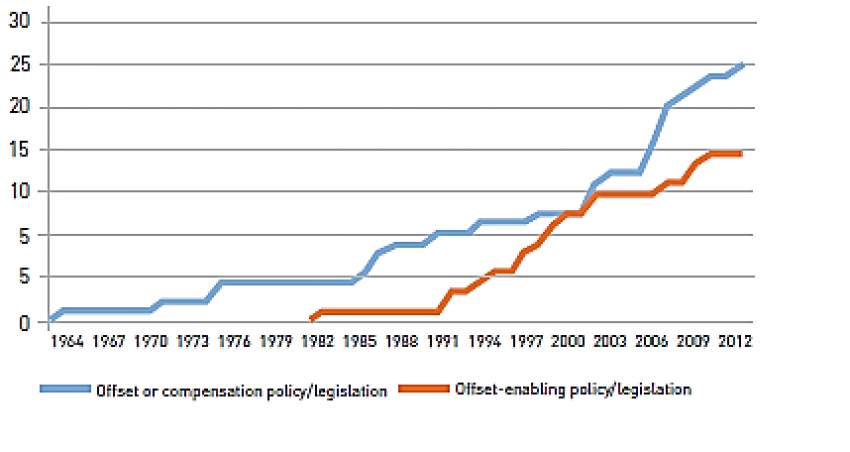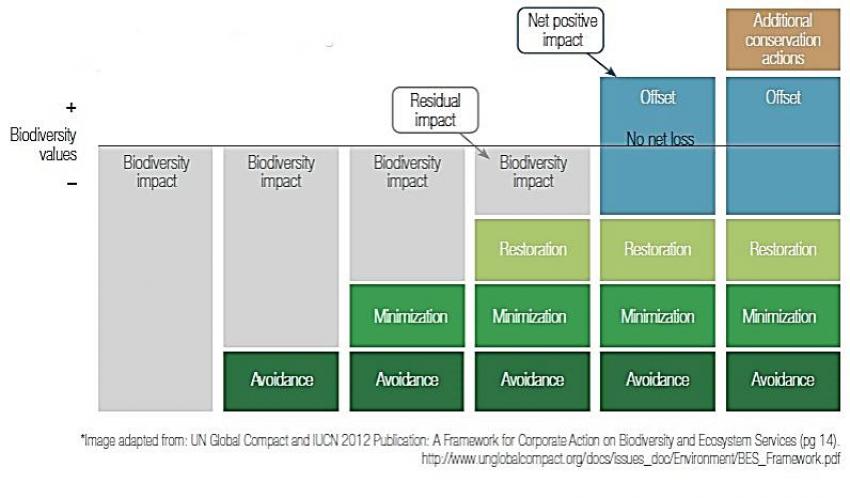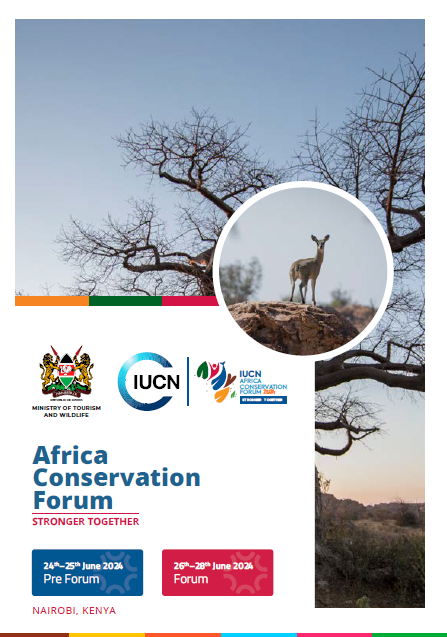Biodiversity offsets must not be used in certain circumstances. For example, when a project may result in the extinction of species, when there is a high degree of uncertainty regarding the success of the offset, a clear lack of governance, or the values that will be lost are specific to a particular place, and therefore cannot be found elsewhere.
Implementing biodiversity offsets is a long-term exercise. Biodiversity offset schemes should be measurable and appropriately implemented, monitored, evaluated and enforced, and take full account of direct, indirect and cumulative impacts, geographically and over time.
National laws and circumstances vary around the world, so there is no single approach to designing and implementing biodiversity offsets. However, policy should be based on sound principles and allow some flexibility and options as to how these are to be applied, subject to clear rules that specify the outcomes expected and set out basic requirements such as exchange rules, metrics and standards for delivery. Offset schemes should follow a Rights-based Approach, and take into account societal values in their design, implementation and governance.
IUCN’s Policy on Biodiversity Offsets, adopted by the Members’ Assembly of the World Conservation Congress, which took place 1-10 September 2016 in Hawai‘i, provides a framework to guide the design, implementation and governance of biodiversity offset schemes and projects. It also provides guidance as to where offsets are, and are not, an appropriate conservation tool to ensure that, when offset schemes are used they lead to positive conservation outcomes.
Key elements of biodiversity offsets included in IUCN’s Policy are:
Measuring and exchanging biodiversity, defensible and replicable measures and units of exchange, sufficient baseline surveys, and established exchange rules governing which residual impacts can be offset by what type of gains.
Additionality, biodiversity offsets must secure additional conservation outcomes that would not have happened otherwise.
Timeframe, the offset gain should last at least as long as the impact being addressed which in most cases means in perpetuity.
Uncertainty, offsets must account for uncertainty by clearly documenting data sources, assumptions, and knowledge gaps.
Monitoring and evaluation, continued surveys of impacts and offset activities to measure the losses and gains that have actually transpired.
Governance and permanence, legal, institutional and financial measures must be in place to ensure the effective design and implementation of offset schemes. The mitigation hierarchy framework should be embedded in landscape and seascape level planning and legislation.







